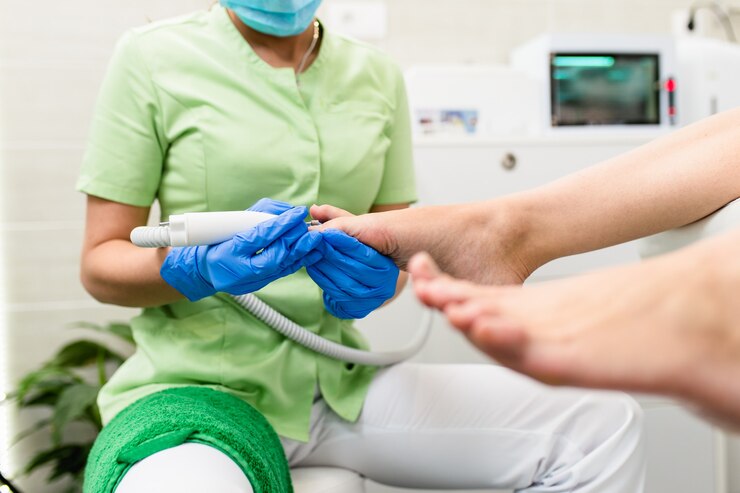The Progression Of Tooth Abscess: Unveiling The Different Stages
Tooth abscess is a common dental condition characterized by a bacterial infection that leads to the formation of pus-filled pockets within the tooth or surrounding tissues. If left untreated, a tooth abscess can progress through different stages, each presenting unique symptoms and potential complications. Understanding these stages is crucial for timely diagnosis and appropriate treatment. In this article, we will explore the various tooth abscess stages and discuss the corresponding symptoms and treatment options.
Initial Infection
The initial stage of a tooth abscess is characterized by the onset of a bacterial infection in the tooth’s pulp chamber. It is essential to address this infection promptly to prevent its progression and potential complications. In Houston, TX, various treatment options are available for tooth infection, ensuring effective management of the condition.
When dealing with an initial tooth infection, the following treatment approaches are commonly employed:
- Antibiotics: To control the infection and prevent its spread, dentists may prescribe antibiotics. These medications help eliminate the bacteria causing the infection. It is crucial to take the full course of antibiotics as prescribed by the dentist.
- Pain Management: Severe toothache is a common symptom of a tooth infection. Over-the-counter pain relievers such as acetaminophen or ibuprofen can help manage the discomfort. However, it is important to consult with a dental professional for appropriate dosage and duration.
- Root Canal Treatment: If the tooth’s pulp is infected, a root canal procedure may be recommended. During this treatment, the dentist removes the infected pulp, cleans the root canals, and seals them to prevent further infection. This procedure aims to save the natural tooth and alleviate pain.
- Extraction: In cases where the tooth is severely infected or damaged, extraction may be necessary. This involves the removal of the affected tooth to prevent the infection from spreading to neighboring teeth or causing further complications. After extraction, options for tooth replacement, such as dental implants or bridges, can be discussed.
- Preventive Measures: Alongside treatment, preventive measures play a crucial role in managing a tooth infection. These include maintaining good oral hygiene practices, such as regular brushing and flossing, attending routine dental check-ups, and addressing any dental issues promptly.
Dental clinics and practitioners offer comprehensive Tooth Infection Treatment in Houston, TX. Seeking professional dental care is crucial to accurately diagnose the infection, determine the appropriate treatment plan, and ensure the best possible outcome.
Development Of An Abscess
If the initial infection is not addressed promptly, it can progress to the next stage, where an abscess forms. The bacteria continue to spread, leading to the accumulation of pus in the pulp chamber or at the root tip. This stage is characterized by the following symptoms:
- Intensifying pain: The toothache becomes more severe and persistent, often throbbing in nature. The pain may radiate to the jaw, ear, or neck.
- Increased swelling: The swelling in the gum worsens, and a visible lump or blister may develop.
- Bad taste or odor: As the abscess drains pus into the mouth, it can cause a foul taste or odor.
Treatment: Treating an abscess requires more extensive intervention. The dentist may need to perform a root canal to remove the infected pulp and seal the tooth, or in severe cases, extract the tooth entirely. Antibiotics may also be prescribed to control the infection and prevent further complications.
Spreading Infection
If the abscess is not properly treated, the infection can spread beyond the initial site, affecting the surrounding tissues and potentially leading to serious complications. This stage is characterized by:
- Facial swelling: The infection may extend into the cheeks, causing noticeable facial swelling.
- Difficulty opening the mouth: The swelling and inflammation can restrict jaw movement, making it difficult to fully open the mouth.
- Lymph node involvement: Infected lymph nodes in the neck may become tender and swollen.
Treatment: The dentist may need to drain the abscess and perform additional procedures, such as surgical incision and drainage, to address the spreading infection. Antibiotics are typically prescribed to combat the bacterial infection and prevent systemic complications.
Abscess Rupture
When a tooth abscess reaches the stage of rupture, it means that the accumulated pus within the abscess pocket has found an exit point and is draining out. This rupture can occur spontaneously or as a result of external pressure on the abscess. While it may provide temporary relief from the intense pain associated with the abscess, it is important to note that the infection itself is not resolved by the rupture.
During the rupture, the following may occur:
- Pain relief: The sudden release of pressure from the abscess can bring immediate relief from the severe toothache.
- Discharge of pus: Pus, which is a thick yellowish fluid composed of dead bacteria, white blood cells, and tissue debris, drains out of the abscess. This discharge can have a foul taste or odor.
- Temporary improvement: The symptoms may temporarily improve, giving a false sense of resolution. However, without proper treatment, the infection can persist and potentially worsen.
It is crucial to seek professional dental care even after an abscess rupture to address the underlying infection and prevent further complications. Treatment may involve antibiotics, further drainage, and appropriate dental procedures to eliminate the source of the infection and promote healing.
 English
English 




























































































































































